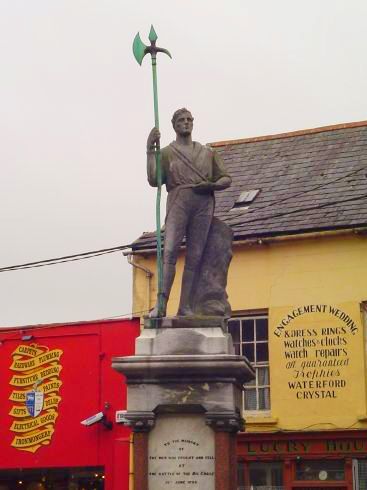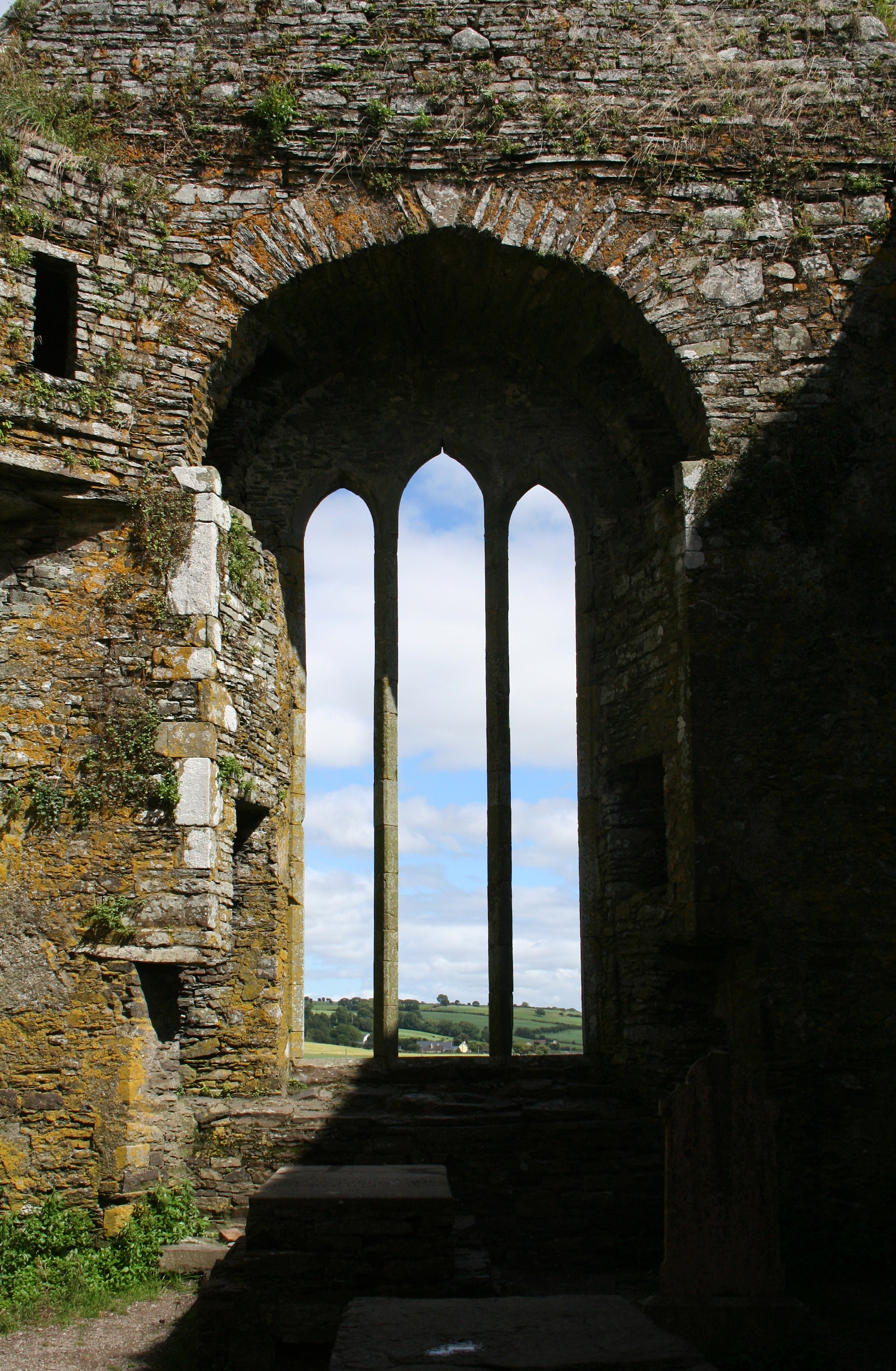|
Máire Ní Shíthe
Máire Ní Shíthe (186813 July 1955) was an Irish language writer and translator from West Cork. Biography Máire (Minnie) Ní Shíthe was born to Timothy Sheehy and Ann Deasy in Ballymacown, Killnagross, near Clonakilty, County Cork about 1868. She was educated in Darrara National School and the Convent of Mercy, Clonakilty until about 1887. Ní Shíthe wrote for An Claidheamh Soluis where she was published using the pseudonym ''Dul Amu'', first used on 2 December 1899 in ''Fáinne an Lae''. She also was published in ''Irisleabhar na Gaeile''. She had a talent for languages and translated dramas from French and German. She was a student of Donnchadh Pléimeann. She won the Oireachtais prize in 1901 with ''Suipéar Dhiarmada Mhic Phaidín''. Ní Shíthe wrote with Eilís Ní Mhurchadha and in 1902 performed in their play ''Beart Nótaí'' in Belfast. Ní Shíthe worked as a translator for ''An Gúm'' as well as being the Irish language editor for the ''Cork Sun'' in 1903. ... [...More Info...] [...Related Items...] OR: [Wikipedia] [Google] [Baidu] |
Clonakilty
Clonakilty (; ), sometimes shortened to Clon, is a town in County Cork, Ireland. The town is located at the head of the tidal Clonakilty Bay. The rural hinterland is used mainly for dairy farming. The town's population as of 2016 was 4,592. The town is a tourism hub in West Cork, and was recognised as the "Best Town in Europe" in 2017, and "Best Place of the Year" in 2017 by the Royal Institute of the Architects of Ireland. Clonakilty is in the Cork South-West (Dáil Éireann) constituency, which has three seats. History The Clonakilty area has a number of ancient and pre-Celtic sites, including Lios na gCon ringfort. Norman settlers built castles around Clonakilty, and a number of Norman surnames survive in the West Cork area to the present day. In 1292, Thomas De Roach received a charter to hold a market every Monday at Kilgarriffe (then called Kyle Cofthy or Cowhig's Wood), close to where the present town now stands. In the 14th century, a ten-mile strip of fallow woodl ... [...More Info...] [...Related Items...] OR: [Wikipedia] [Google] [Baidu] |
Damer Hall
Damer Hall, also known as Damer Theatre ( ga, Amharclann an Damer) and An Damer, is a former theatre and former school located in the basement of the Dublin Unitarian Church at 112 St Stephen's Green in Dublin, Ireland.Unitarian Church, St. Stephen's Green, Dublin 2, DUBLIN ''National Inventory of Architectural Heritage''. Accessed: 4 August 2021. Building history From ca. 1718 (or possibly 1725), Damer Hall served as Damer School, a |
Irish Translators
Irish may refer to: Common meanings * Someone or something of, from, or related to: ** Ireland, an island situated off the north-western coast of continental Europe ***Éire, Irish language name for the isle ** Northern Ireland, a constituent unit of the United Kingdom of Great Britain and Northern Ireland ** Republic of Ireland, a sovereign state * Irish language, a Celtic Goidelic language of the Indo-European language family spoken in Ireland * Irish people, people of Irish ethnicity, people born in Ireland and people who hold Irish citizenship Places * Irish Creek (Kansas), a stream in Kansas * Irish Creek (South Dakota), a stream in South Dakota * Irish Lake, Watonwan County, Minnesota * Irish Sea, the body of water which separates the islands of Ireland and Great Britain People * Irish (surname), a list of people * William Irish, pseudonym of American writer Cornell Woolrich (1903–1968) * Irish Bob Murphy, Irish-American boxer Edwin Lee Conarty (1922–1961) * Irish McCal ... [...More Info...] [...Related Items...] OR: [Wikipedia] [Google] [Baidu] |
Irish Women Writers
This is a list of women writers who were born in Ireland or whose writings are closely associated with that country. A *Mary Jane Adams (1840–1902), Irish-American poet *Cecil Frances Alexander (1818–1895), Anglo-Irish hymn writer and poet * Eleanor Jane Alexander (1857–1939), poet and novelist * Deborah Alcock (1835–1913), historical novelist, memoirist *Cecelia Ahern (born 1981), novelist, short story writer *Liz Allen (born 1969), investigative journalist, best selling novelist * Colette Nic Aodha (born 1967), poet * Karen Ardiff, Irish playwright and novelist *Geraldine Aron (born 1951), playwright *Mary Arrigan (born 15 February 1943), illustrator, artist and novelist *Sarah Atkinson (1823–1893), biographer, essayist, philanthropist B * Mary Barber (c.1685–c.1755), successful poet, author of ''Poems on several occasions'' *Leland Bardwell (1928–2016), poet, novelist, playwright *Alex Barclay, pseudonym of Yve Williams, (born 1974), journalist and crime wr ... [...More Info...] [...Related Items...] OR: [Wikipedia] [Google] [Baidu] |
19th-century Irish Writers
The 19th (nineteenth) century began on 1 January 1801 ( MDCCCI), and ended on 31 December 1900 ( MCM). The 19th century was the ninth century of the 2nd millennium. The 19th century was characterized by vast social upheaval. Slavery was abolished in much of Europe and the Americas. The First Industrial Revolution, though it began in the late 18th century, expanding beyond its British homeland for the first time during this century, particularly remaking the economies and societies of the Low Countries, the Rhineland, Northern Italy, and the Northeastern United States. A few decades later, the Second Industrial Revolution led to ever more massive urbanization and much higher levels of productivity, profit, and prosperity, a pattern that continued into the 20th century. The Islamic gunpowder empires fell into decline and European imperialism brought much of South Asia, Southeast Asia, and almost all of Africa under colonial rule. It was also marked by the collapse of the large S ... [...More Info...] [...Related Items...] OR: [Wikipedia] [Google] [Baidu] |
1955 Deaths
Events January * January 3 – José Ramón Guizado becomes president of Panama. * January 17 – , the first nuclear-powered submarine, puts to sea for the first time, from Groton, Connecticut. * January 18– 20 – Battle of Yijiangshan Islands: The Chinese Communist People's Liberation Army seizes the islands from the Republic of China (Taiwan). * January 22 – In the United States, The Pentagon announces a plan to develop intercontinental ballistic missiles (ICBMs), armed with nuclear weapons. * January 23 – The Sutton Coldfield rail crash kills 17, near Birmingham, England. * January 25 – The Presidium of the Supreme Soviet of the Soviet Union announces the end of the war between the USSR and Germany, which began during World War II in 1941. * January 28 – The United States Congress authorizes President Dwight D. Eisenhower to use force to protect Formosa from the People's Republic of China. February * February 10 – The United States Seventh Flee ... [...More Info...] [...Related Items...] OR: [Wikipedia] [Google] [Baidu] |
1868 Births
Events January–March * January 2 – British Expedition to Abyssinia: Robert Napier leads an expedition to free captive British officials and missionaries. * January 3 – The 15-year-old Mutsuhito, Emperor Meiji of Japan, declares the ''Meiji Restoration'', his own restoration to full power, under the influence of supporters from the Chōshū and Satsuma Domains, and against the supporters of the Tokugawa shogunate, triggering the Boshin War. * January 5 – Paraguayan War: Brazilian Army commander Luís Alves de Lima e Silva, Duke of Caxias enters Asunción, Paraguay's capital. Some days later he declares the war is over. Nevertheless, Francisco Solano López, Paraguay's president, prepares guerrillas to fight in the countryside. * January 7 – The Arkansas constitutional convention meets in Little Rock. * January 9 – Penal transportation from Britain to Australia ends, with arrival of the convict ship ''Hougoumont'' in Western Aus ... [...More Info...] [...Related Items...] OR: [Wikipedia] [Google] [Baidu] |
Timoleague Friary
Timoleague Friary (), also known as Timoleague Abbey, is a ruined medieval Franciscan friary in Timoleague, County Cork, Ireland, on the banks of the Argideen River overlooking Courtmacsherry Bay. It was built on the site of an early Christian monastic site founded by Saint Molaga, from whom the town of Timoleague derives its name. The present remains date from roughly the turn of the fourteenth century and were burnt down by British forces in the mid-seventeenth century, at which point it was an important ecclesiastical centre that engaged in significant trade with Spain. The friary is the largest medieval ruin in West Cork and one of the few early Franciscan friaries in Ireland to have substantial ruins. It is claustral in layout, and built in the Early English Gothic architectural style. It contains several elements atypical of Franciscan architecture of the period, including wall passages and exterior access to its upper floor. It was significantly altered in the early 16t ... [...More Info...] [...Related Items...] OR: [Wikipedia] [Google] [Baidu] |
Micheál Mac Liammóir
Micheál Mac Liammóir (born Alfred Willmore; 25 October 1899 – 6 March 1978) was an actor, designer, dramatist, writer and impresario in 20th-century Ireland. Though born in London to an English family with no Irish connections, he emigrated to Ireland in early adulthood, changed his name, invented an Irish ancestry, and remained based there for the rest of his life, successfully maintaining a fabricated identity as a native Irishman born in Cork. With his partner, Hilton Edwards, and two others, Mac Liammóir founded the Gate Theatre in Dublin, and became one of the most recognisable figures in the arts in twentieth-century Ireland. As well as acting at the Gate and internationally, he designed numerous productions, wrote eleven plays, and published stories, verse and travel books in Irish and English. He wrote and appeared in three one-man shows, of which ''The Importance of Being Oscar'' (1960) was the most celebrated, achieving more than 1,300 performances. Life and care ... [...More Info...] [...Related Items...] OR: [Wikipedia] [Google] [Baidu] |
County Cork
County Cork ( ga, Contae Chorcaí) is the largest and the southernmost county of Ireland, named after the city of Cork, the state's second-largest city. It is in the province of Munster and the Southern Region. Its largest market towns are Mallow, Macroom, Midleton, and Skibbereen. the county had a population of 581,231, making it the third- most populous county in Ireland. Cork County Council is the local authority for the county, while Cork City Council governs the city of Cork and its environs. Notable Corkonians include Michael Collins, Jack Lynch, Roy Keane, Sonia O'Sullivan and Cillian Murphy. Cork borders four other counties: Kerry to the west, Limerick to the north, Tipperary to the north-east and Waterford to the east. The county contains a section of the Golden Vale pastureland that stretches from Kanturk in the north to Allihies in the south. The south-west region, including West Cork, is one of Ireland's main tourist destinations, known for its rugged coast ... [...More Info...] [...Related Items...] OR: [Wikipedia] [Google] [Baidu] |
Gate Theatre
The Gate Theatre is a Theater (structure), theatre on Cavendish Row in Dublin, Ireland. It was founded in 1928. History Beginnings The Gate Theatre was founded in 1928 by Hilton Edwards and Micheál MacLiammóir with Daisy Bannard Cogley and Gearóid Ó Lochlainn. During their first season, they presented seven plays, including Ibsen's Peer Gynt, O’Neill's The Hairy Ape and Wilde's Salomé. They offered Dublin audiences an introduction to the world of European and American theatre as well as classics from the modern and Irish repertoire. It was at the Gate that Orson Welles, James Mason, Geraldine Fitzgerald and Michael Gambon began their acting careers. The company played for two seasons at the Peacock Theatre and then moved to the 18th Century Rotunda Annex - the ‘Upper Concert Hall’, the Gate's present home, with Goethe's Faust opening on 17 February 1930. Lord and Lady Longford The newly established Gate Theatre ran into financial difficulties and a meeting was called ... [...More Info...] [...Related Items...] OR: [Wikipedia] [Google] [Baidu] |







